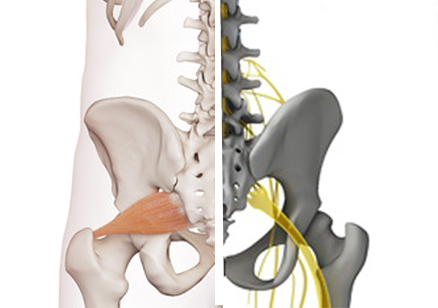

Piriformis syndrome is when the piriformis muscle spasms and causes buttock pain. Resting deep in the buttock under the gluteus maximus lays the piriformis muscle. It begins at the base of the spine, connecting to the upper surface of each thigh bone. Its function is to assist in rotating the hip and turning the leg and foot outward. It runs diagonally while the sciatic nerve runs perpendicular beneath it.This muscle combined with its tendons can compress and irritate the sciatic nerve and cause sciatica like pains, numbness and tingling along the back of the leg and into the foot. The nerve can also be compressed between the piriformis and the sacroiliac joint (SI joint, connection between the sacrum with the pelvis on each side of the lower spine) caused by an abnormal motion.Even a low level of pressure applied to the nerve for a long period of time can create piriformis syndrome symptoms.
Trigger points, areas of tenderness in the body’s connective tissue, in the piriformis or gluteal muscles can create muscle spasms or high tension and lead to nerve compression. Trigger points in the gluteus minimus are known to reproduce symptoms identical to sciatica that could be confused with piriformis syndrome.
The primary problem of piriformis syndrome is nerve entrapment by a soft-tissue structure. The goal of treatment is to reduce, painful pressureon the affected nerve or nerves.
